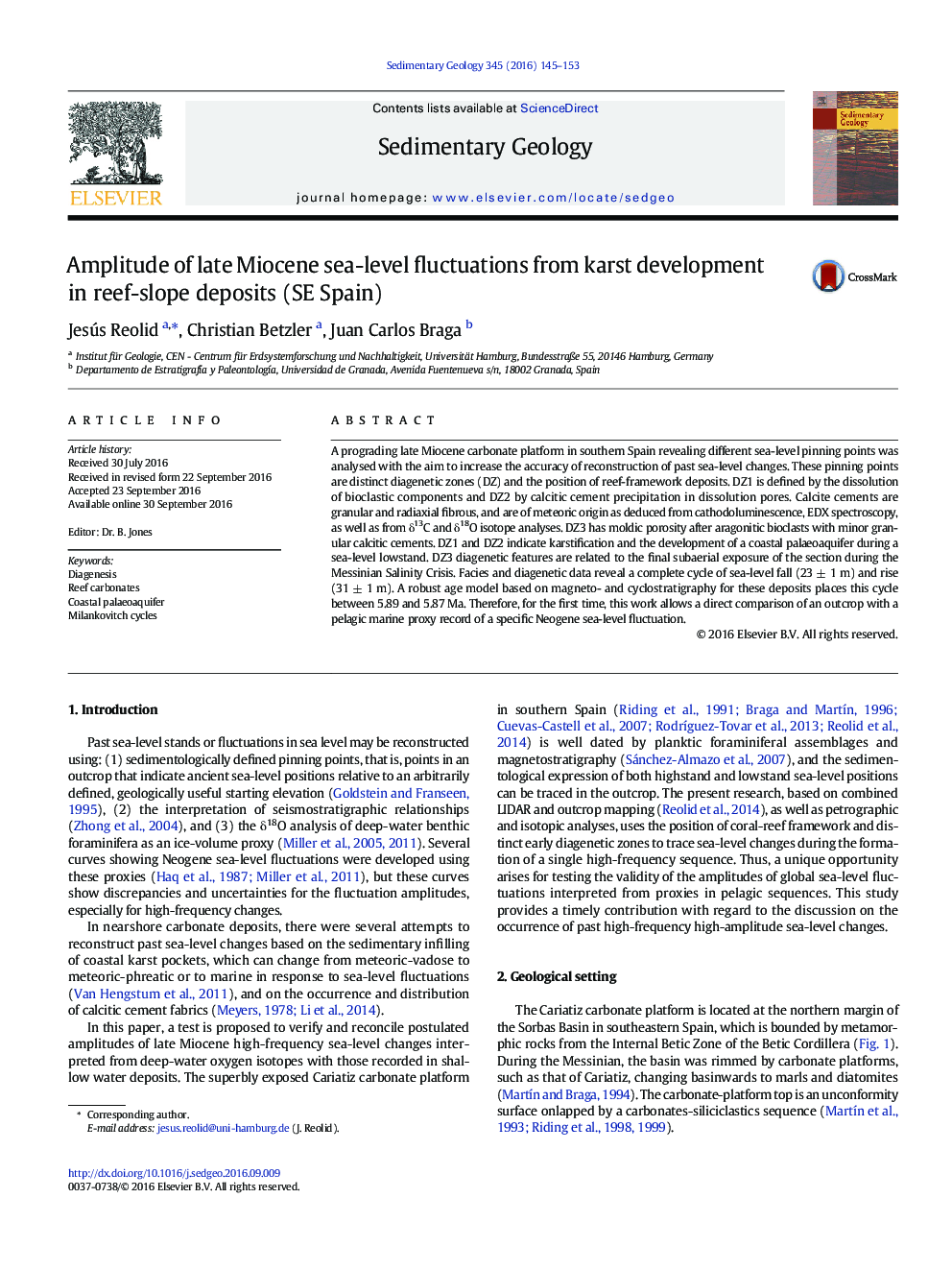| کد مقاله | کد نشریه | سال انتشار | مقاله انگلیسی | نسخه تمام متن |
|---|---|---|---|---|
| 4688904 | 1636018 | 2016 | 9 صفحه PDF | دانلود رایگان |
A prograding late Miocene carbonate platform in southern Spain revealing different sea-level pinning points was analysed with the aim to increase the accuracy of reconstruction of past sea-level changes. These pinning points are distinct diagenetic zones (DZ) and the position of reef-framework deposits. DZ1 is defined by the dissolution of bioclastic components and DZ2 by calcitic cement precipitation in dissolution pores. Calcite cements are granular and radiaxial fibrous, and are of meteoric origin as deduced from cathodoluminescence, EDX spectroscopy, as well as from δ13C and δ18O isotope analyses. DZ3 has moldic porosity after aragonitic bioclasts with minor granular calcitic cements. DZ1 and DZ2 indicate karstification and the development of a coastal palaeoaquifer during a sea-level lowstand. DZ3 diagenetic features are related to the final subaerial exposure of the section during the Messinian Salinity Crisis. Facies and diagenetic data reveal a complete cycle of sea-level fall (23 ± 1 m) and rise (31 ± 1 m). A robust age model based on magneto- and cyclostratigraphy for these deposits places this cycle between 5.89 and 5.87 Ma. Therefore, for the first time, this work allows a direct comparison of an outcrop with a pelagic marine proxy record of a specific Neogene sea-level fluctuation.
Journal: Sedimentary Geology - Volume 345, November 2016, Pages 145–153
